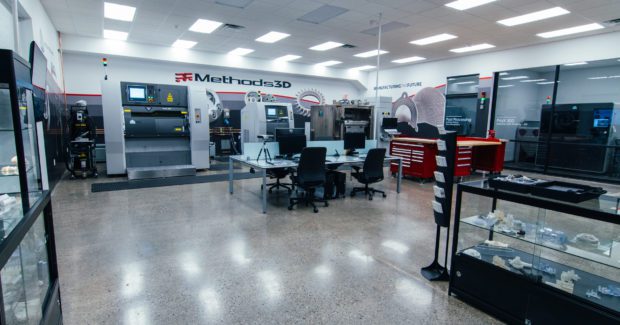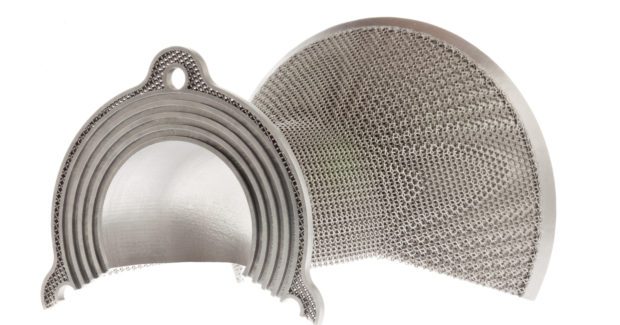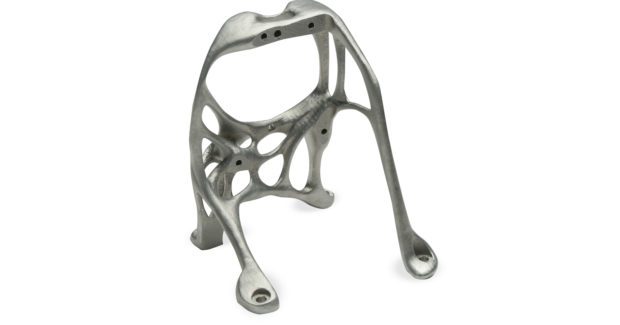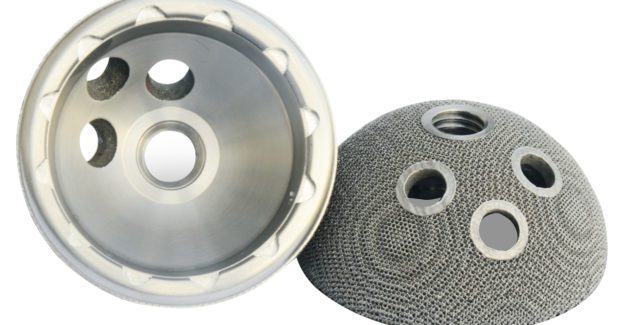A Unique Partnership: Metal Additive Manufacturing and Conventional Machining
Here are five important aspects of the design and manufacturing process that everyone should understand to properly and successfully implement metal additive manufacturing within your company.
Posted: July 27, 2016
Metal additive manufacturing is revolutionizing how companies design, test, manufacture, and distribute products. Disruptive technologies such as additive manufacturing (AM) often lead to uncertainty and concern regarding the adoption and implementation within their companies. For metal AM, there are five important aspects of the design and manufacturing process that everyone should understand to properly and successfully implement additive manufacturing within your company.
Additive manufacturing provides freedom to design without the traditional restrictions of conventional manufacturing processes. Product designers have long implemented the process of Design for Manufacturability (DFM) that drove product design to concepts that were easy to manufacture, but often times compromised on performance, weight, cost, materials, and other factors. These compromises result in products that oftentimes never reach the true goal of the designer, or needs/wishes of the consumer. With additive manufacturing, these compromises are reduced or eliminated and the designers are now able to achieve an optimized product that is better targeted to the market. As a result, designs become lighter, structural capabilities and product durability increase, products perform at higher efficiencies and temperatures, and assemblies are eliminated. All of these results combine to equal lower total cost.
Secondly, a large concern is that additive manufacturing will eliminate conventional machining. Although it is true that metal AM can create highly advanced and complex products, it does not by itself necessarily produce end-use features required by many applications. During the additive process, critical key features may have a resulting surface finish or tolerance that does not achieve the product requirement. Understanding the end-use of the product and the capabilities of the additive process being used, the designer can incorporate features and surfaces that provide seamless integration with precision conventional machining. The design can be created to include integrated part holding, near-net stock surfaces for finished polishing or machining, temporary stiffeners and supports, or any other features required. This cooperative relationship creates a manufacturing process that is specialized, optimized, and highly efficient as the strengths and benefits of each manufacturing process are realized.
The immediate and most notable impact of metal AM is the ability to create highly intricate components, however, it also provides substantial opportunities to optimize current manufacturing processes such as injection molding and precision machining. Utilizing the design freedoms previously discussed, injection molding dies can be designed and produced with advanced conformal cooling passages near the surface of the die that will create more efficient cooling, reducing cycle times and improving production rates and cost. Jigs and fixtures can be produced with coolant and pneumatic passages integrated for higher durability while reducing weight for the machine and operator.
The ability to print parts with metal AM creates a tremendous opportunity to reduce or eliminate the large investment in tooling lead time and cost. During the development cycle of a product manufacturers oftentimes must invest heavily in tooling to produce prototype and product testing components. With metal AM, the manufacturer can produce these parts directly and therefore minimize the associated cost and lead-time, resulting in accelerated time to market. As these products enter the market in production, metal AM can be used to continue the cost savings by eliminating the need for casting and forging dies as well as numerous machining and transfer fixtures. Throughout the product life-cycle these savings can be substantial by eliminating the hidden recurring costs associated with tooling inspection, validation, maintenance, and replacement.
Metal AM is indeed a 3D printing technology, but it is important to understand the necessary steps to producing a component. The benefit of the process is that all additive manufacturing is driven by 3D CAD models, but that does not mean a user simply loads a 3D model into the machine, hits the print button, and hours later a finished part is waiting. There are several steps between producing a 3D model and achieving a successfully built product. In the metal AM process, the product is built layer-by-layer through depositing metal powder and subsequently melting using a high-energy laser or electron beam. Understanding the behavior of the material and process, the manufacturer must be aware of how best to define the printing process to achieve a successful product build.
The most notable process parameters are the build orientation and support structure. Build orientation is the positioning of the product within the machine, not only XYZ location but also the rotation of the part relative to the layering system. This orientation will facilitate any post-processing that is required (finished machining or polishing) and also allow the manufacturer to optimize the build time and quantity of products. Support structure is also critical within the process. With the layer-by-layer process it is necessary to provide temporary structures within the product to provide a platform on which to continue printing, but also to provide structural and thermal integrity. With the introduction of high-energy via laser or electron beam, a significant amount of heat is generated and can produce high levels of residual stress within the product. The support structure provides a means to mitigate this stress and maintain dimensional control of the part.
Metal AM has been and will continue to be implemented across all industries as increasing numbers of manufacturers realize the vast potential to revolutionize products and processes. Aerospace, automotive, dental/medical, electronics, and many other market sectors are now realizing the potential of metal additive manufacturing and are applying these technologies to current products. More importantly, companies are incorporating metal AM at the center of design and manufacturing to produce the next generation of revolutionary, competitive products for today’s industry.








